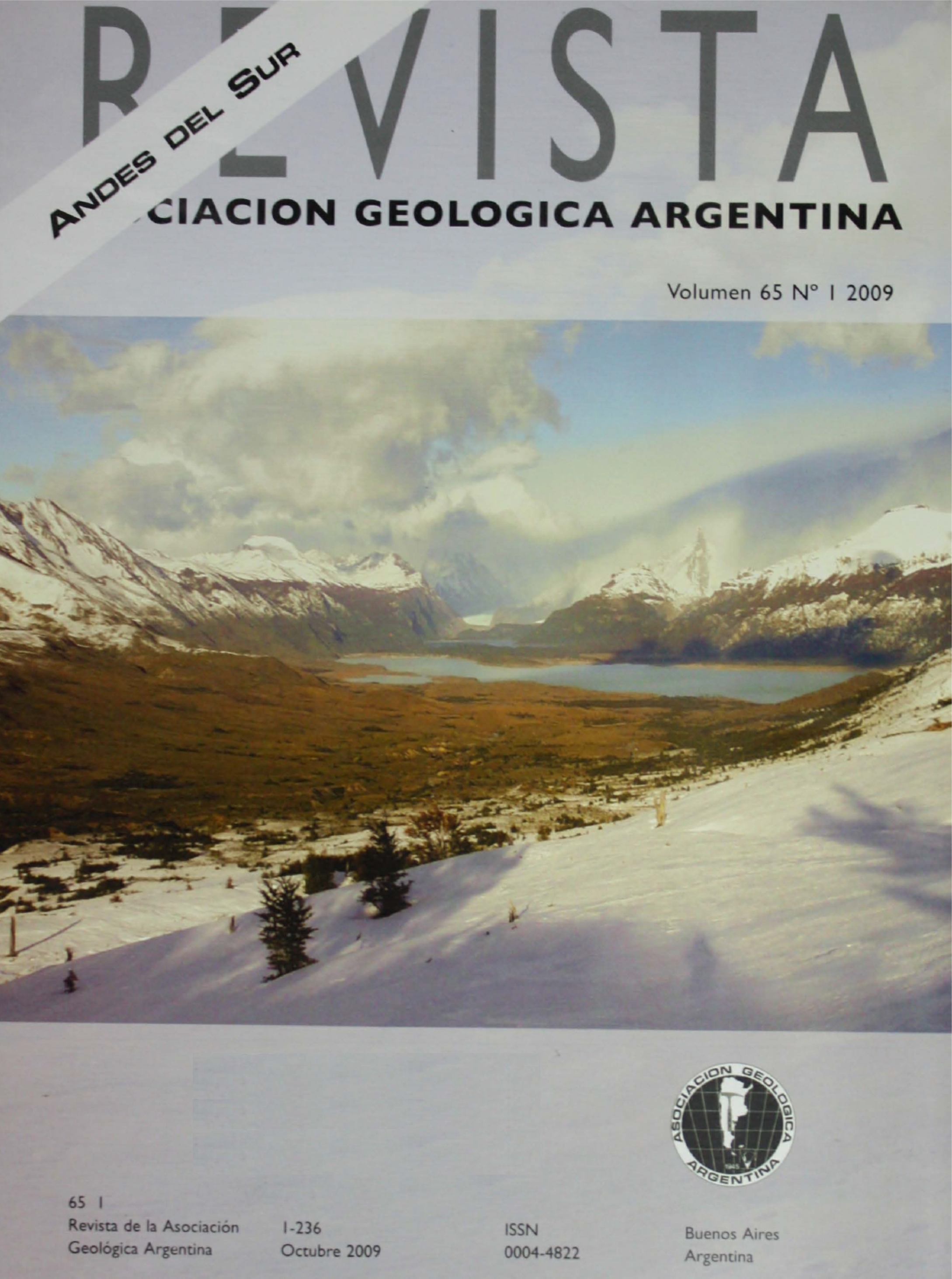Tectonic, paleogeographic, and metallogenic evolution during the Cenozoic in the Andes of Central and Northern Chile and implication for the adjacent regions of Bolivia and Argentina
Main Article Content
Abstract
The Incaic orogeny created significant geographical relief during the Middle Eocene, along most of the area of the preceding magmatic arc, the Incaic Cordillera. This NNE-trending elevated terrain extended from southern Peru to central Chile and formed the boundary between two paleogeographical domains with dissimilar geological evolutions during the rest of the Cenozoic. The western domain was characterized by erosion and sedimentation processes. The eastern domain also included significant erosional episodes, but was characterized by different evolutions north and south of ~27°S. Northward of this latitude, within the Altiplano-Puna realm, the magmatic arc remained in a fixed position, coinciding with the current active arc, and was bordered by a back-arc foreland basin; whereas southward of ~27°S a succession of magmatic arcs developed with a prominent eastward migration. The Late Eocene to Late Oligocene- Early Miocene was characterized by the development of an extensive intra-arc extensional basin, the Abanico Basin. A succession of volcanic and volcaniclastic rocks, with minor sedimentary intercalations, up to 3,000 m thick were deposited within this basin. At about the boundary between the Oligocene and the Miocene a compressive tectonism affected the whole orogen rejuvenating the core of the Incaic Cordillera and resulted in the tectonic inversion of the Abanico Basin; leading to the syntectonic sedimentation on both sides of the new elevated terrain. The beginning of this tectonism is coincident with the Pehuenche orogeny, but the compression extended until the Early Pliocene. During the Early to Middle Miocene the deformation extended to the east with the development of foreland fold and thrust belts and basins. Within the western domain in northern Chile, area of the current Central Depression and Precordillera, the accumulation of thick sedimentary deposits from the western slope of the Incaic Cordillera originated the Tarapacá and Atacama pediments; whereas an extensive peneplanation developed in central Chile. In Late Miocene the prolonged development of the east-verging fold and thrust belts and the generation of overthrusts deep under the Cordillera, which emerged in the Andean front, would have caused the westward tilting of the whole orogen, accompanied by the uplift of the mountain chain and the beginning of its fluvial incision. During the Late Miocene to Early Pliocene a disturbance of the tectonic evolution produced the westward migration of the deformation that coincides in time with the generation of Cu-Mo porphyry mineralization in the area of the former magmatic arc. The compression continued producing uplift of the Cordillera and peneplain surfaces, and rapid exhumation. The shallow seismicity along major faults parallel to the orogen indicates current dextral transcurrent tectonic regime. The economic Cu-Mo porphyry mineralization originated in the latest stages of the magmatic arcs following episodes of crustal thickening, and the location of the mineralizing centers was generally controlled by major faults.
Article Details

This work is licensed under a Creative Commons Attribution-NonCommercial 4.0 International License.
Nota de copyright
Los autores conservan los derechos de autor y garantizan a la revista el derecho de ser la primera publicación del trabajo licenciado según una licencia de atribución Creative Commons que permite a otros compartir el trabajo con el reconocimiento de la autoría y de la publicación en la que se publicó por primera vez.
Declaración de privacidad
Los nombres y direcciones de correo electrónico introducidos en esta revista se usarán exclusivamente para los fines declarados por esta revista y no estarán disponibles para ningún otro propósito u otra persona.

